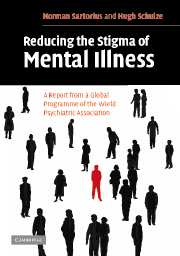Book contents
- Frontmatter
- Contents
- Preface
- Introduction
- Structure of this Book
- Participants in the Programme
- Acknowledgements
- 1 Developing the Programme
- Phase I Calgary, Alberta, Canada
- Phase II
- Phase III
- Phase IV
- 11 Slovakia
- 12 Turkey
- 13 Brazil
- 14 Egypt
- 15 Morocco
- 16 United Kingdom
- 17 Working in Partnership – Australia
- 18 Chile, India and Romania
- 19 Conclusions and Recommendations
- Afterword
- Appendix I
- Appendix II
- Appendix III
- Appendix IV
- Index
17 - Working in Partnership – Australia
from Phase IV
Published online by Cambridge University Press: 15 August 2009
- Frontmatter
- Contents
- Preface
- Introduction
- Structure of this Book
- Participants in the Programme
- Acknowledgements
- 1 Developing the Programme
- Phase I Calgary, Alberta, Canada
- Phase II
- Phase III
- Phase IV
- 11 Slovakia
- 12 Turkey
- 13 Brazil
- 14 Egypt
- 15 Morocco
- 16 United Kingdom
- 17 Working in Partnership – Australia
- 18 Chile, India and Romania
- 19 Conclusions and Recommendations
- Afterword
- Appendix I
- Appendix II
- Appendix III
- Appendix IV
- Index
Summary
The Schizophrenia Australia Foundation was founded in 1986. In 1996, the same year the World Psychiatric Association (WPA) began its global programme to fight the stigma and discrimination because of schizophrenia, the foundation changed its name to SANE Australia. Recognizing the value of sharing information and best practices in their efforts, the WPA global programme and SANE Australia have worked in partnership for nearly a decade, promoting anti-stigma strategies and tactics at seminars and congresses around the world.
Barbara Hocking, Executive Director of SANE, has worked in collaboration with Dr Alan Rosen of the WPA on a variety of initiatives. The goal of SANE Australia is to: ‘promote the interest of people with mental illness and educate the general community through the media.’ They have established their own information resources for the media, as well as for those living with mental illness, their families and caregivers. They have also achieved significant success in working in collaboration with the media.
A wealth of information resources
SANE Australia published a news magazine, SANE News, which has included articles on issues such as the Social Costs of Mental Illness, Drug and Alcohol Abuse, as well as Art and Mental Illness. These articles are archived on the SANE website: www.sane.org
The website also includes resources such as fact sheets on mental illness, an information portal that lets visitors post questions on mental illness, and press releases on stigma issues in the news.
- Type
- Chapter
- Information
- Reducing the Stigma of Mental IllnessA Report from a Global Association, pp. 139 - 141Publisher: Cambridge University PressPrint publication year: 2005



